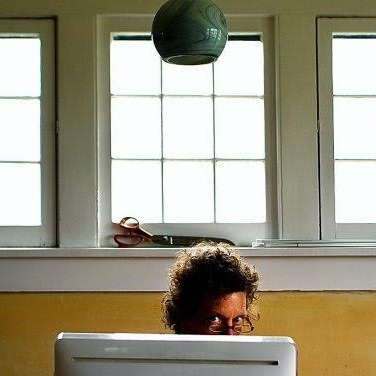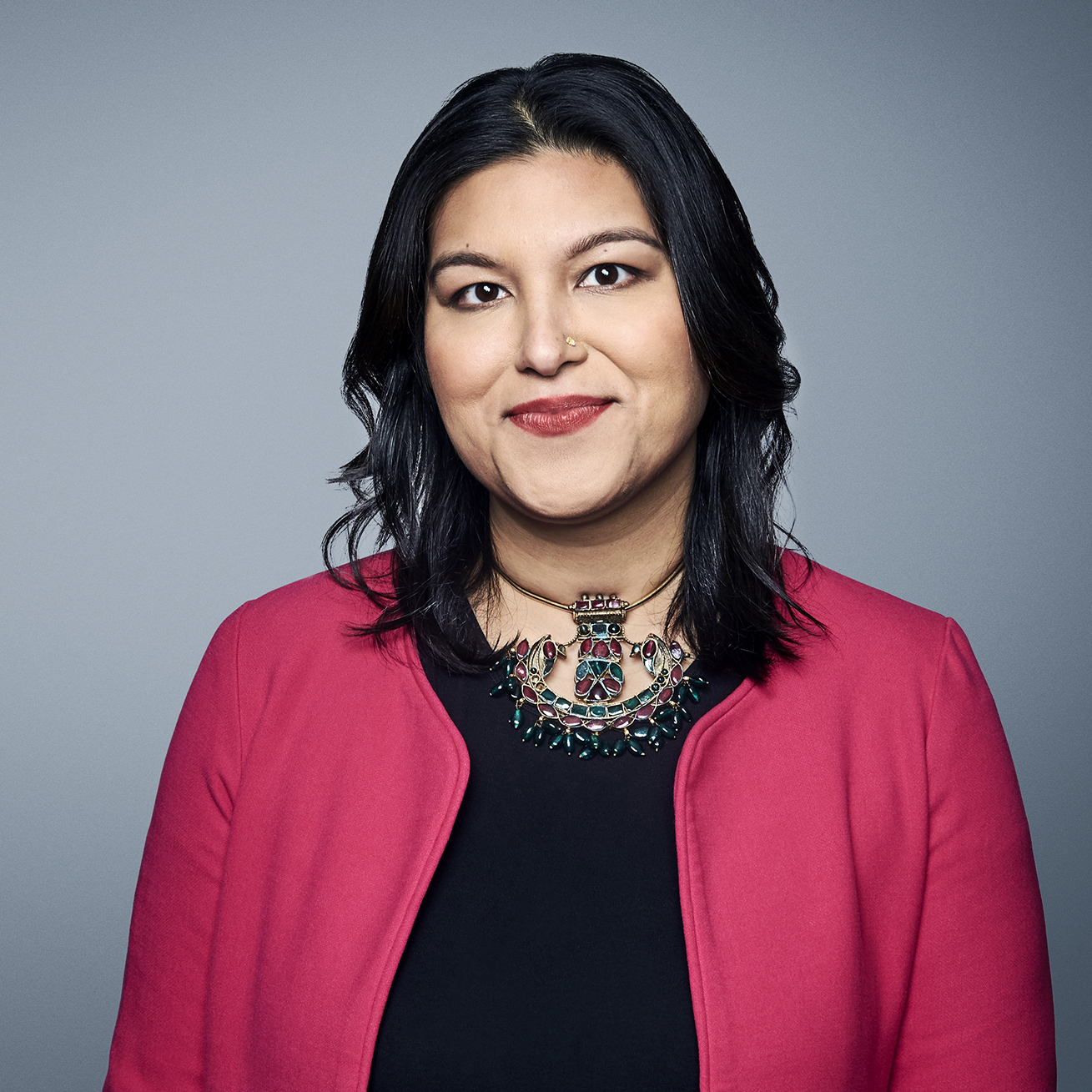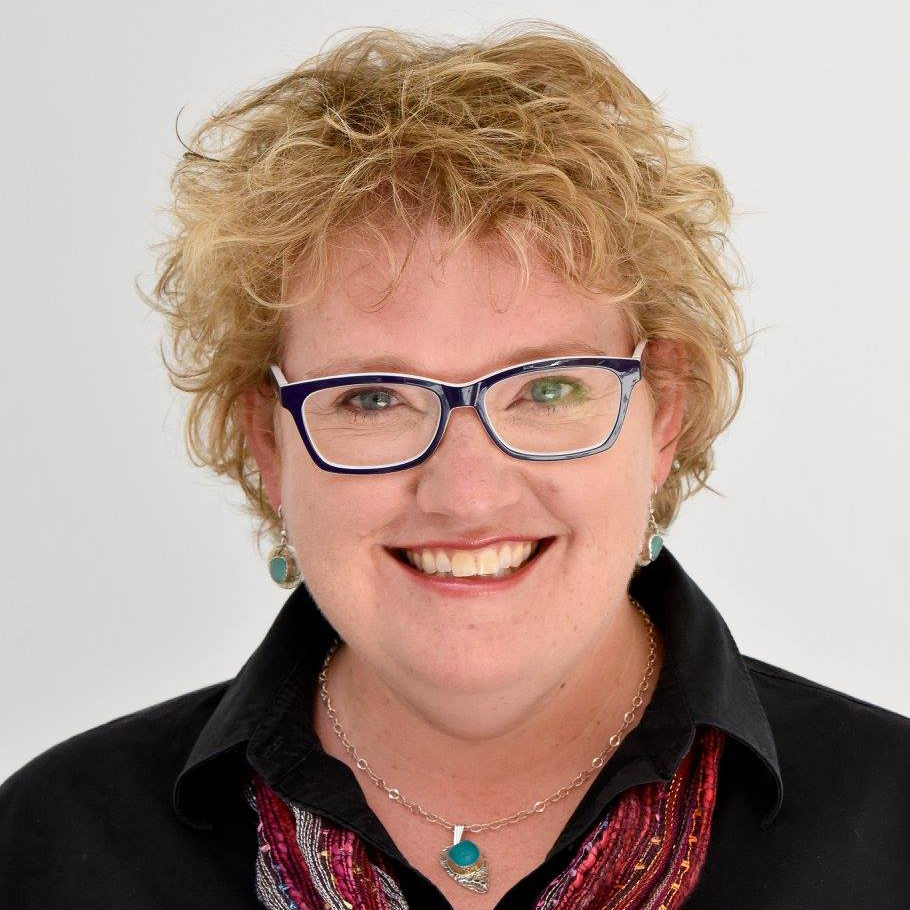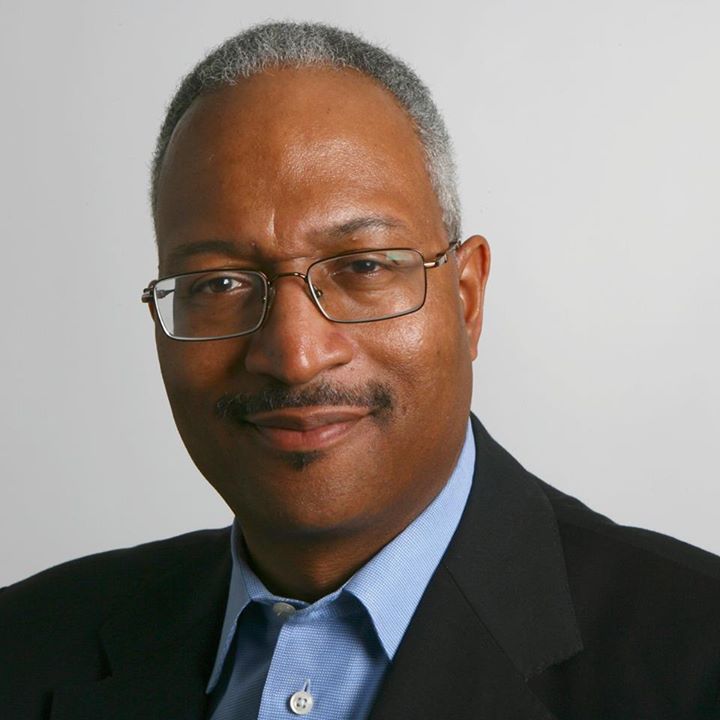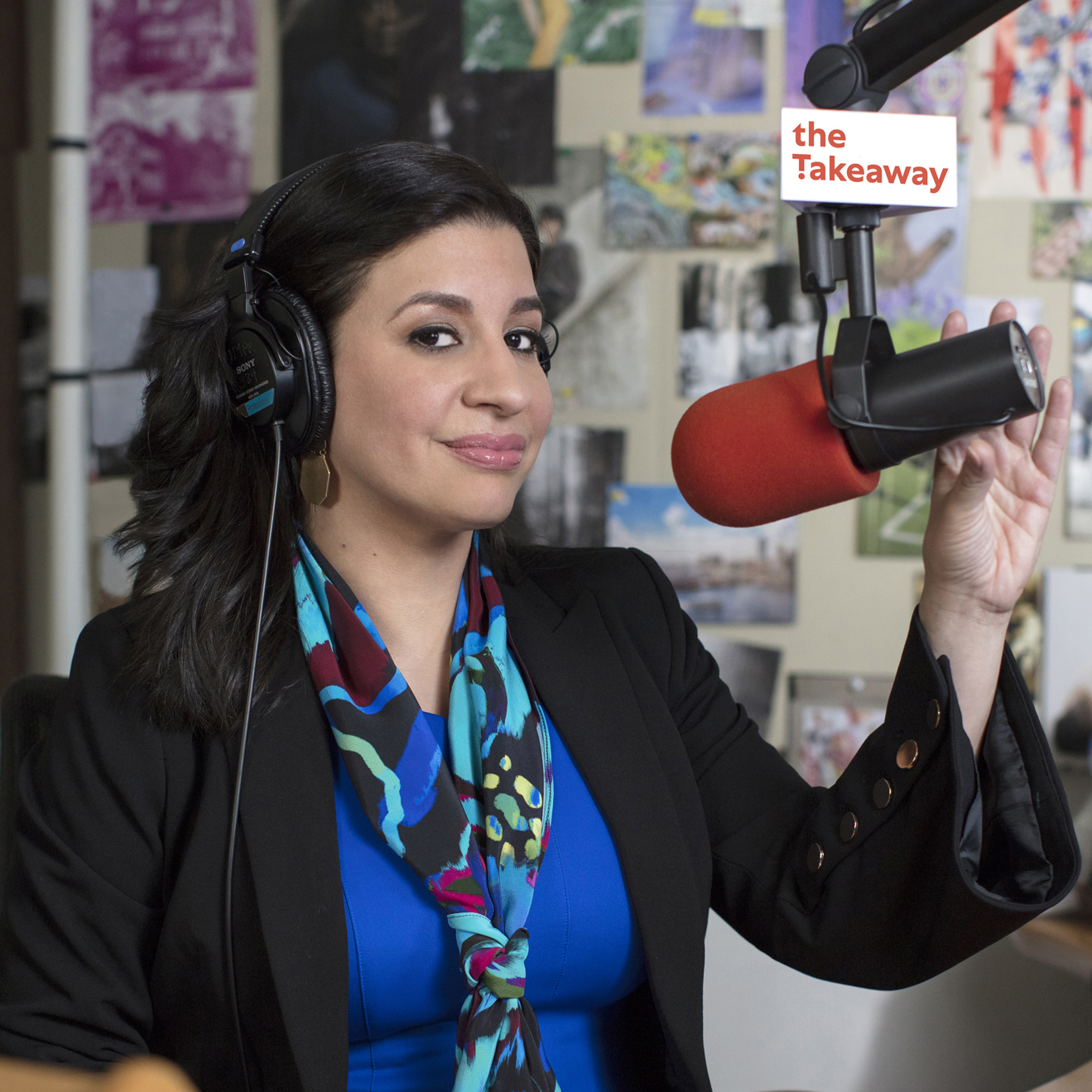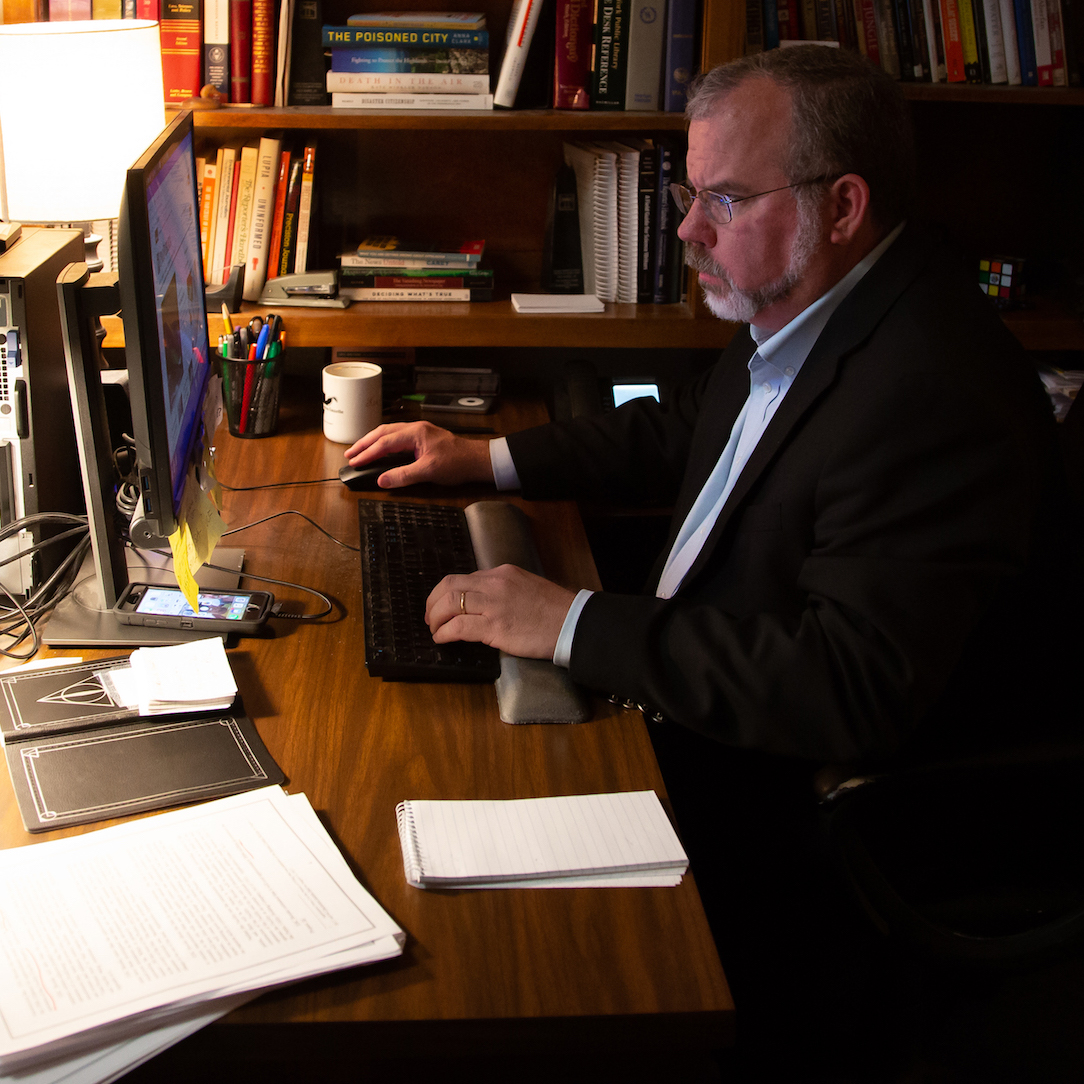Did we just experience the hardest decade in journalism?

Did we just experience the hardest decade in journalism?
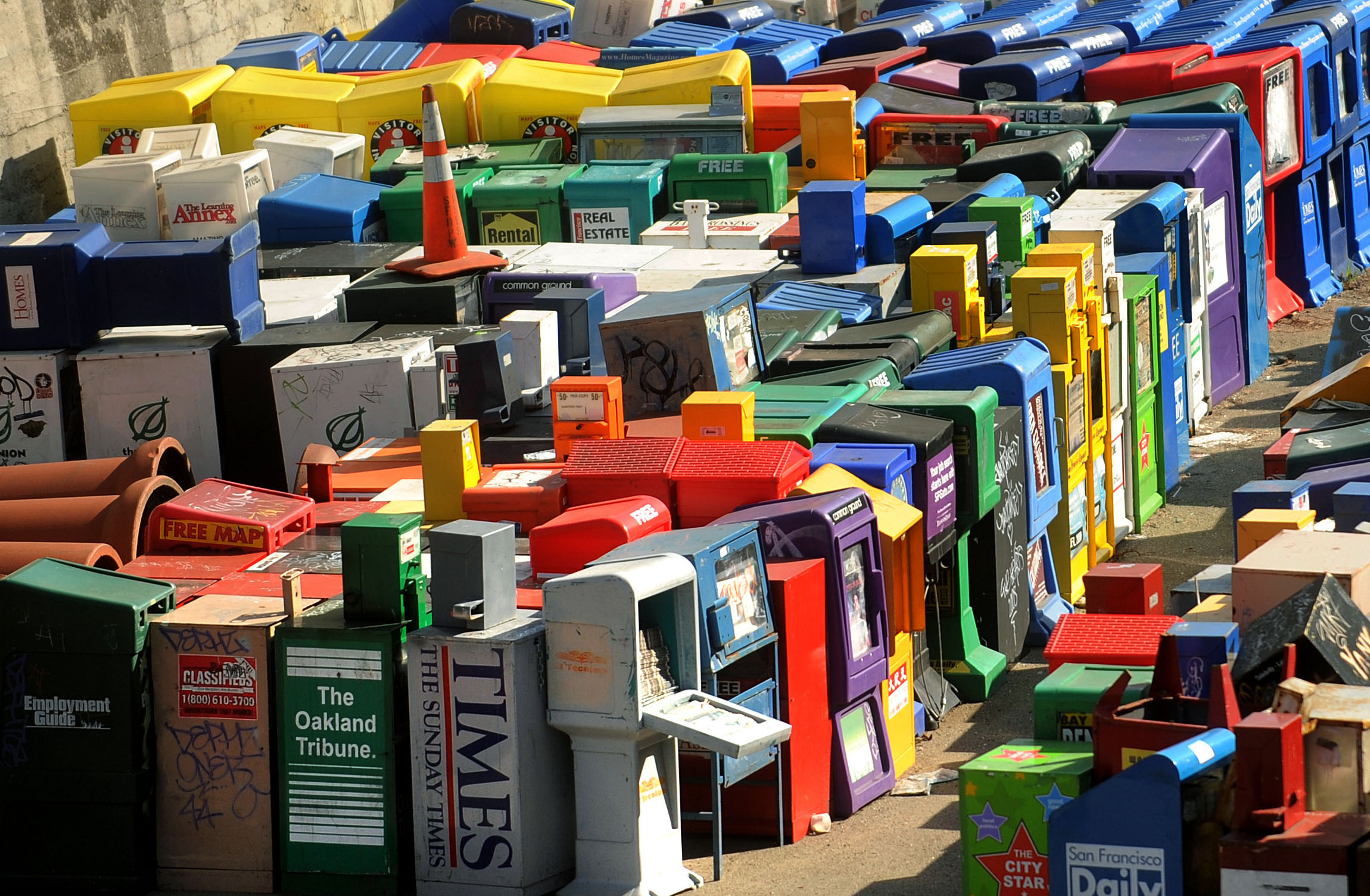
Did we just experience the hardest decade in journalism?

The news industry doesn’t look like it did a decade ago. Poynter interviewed 15 journalists from across the United States to hear their experiences during the last 10 years.
By Kristen Hare
In 2008, Tanzina Vega was a web producer and editor at The New York Times. In 2018, she started hosting a nationally syndicated radio show, “The Takeaway.”
In 2008, Louise Redcorn was the publisher of The Bigheart Times, a weekly newspaper in Osage County, Oklahoma. In 2018, she ran for state representative and narrowly lost.
Ten years ago, Joy Mayer taught print design at the University of Missouri’s School of Journalism.
In 2018, she worked as the director of the Trusting News Project.
“I would not have anticipated that my career focus would become making the case that journalism is important,” she said.
Between the bookends of 2008 and 2018 sit a recession, a presidency that questions the legitimacy of journalism and the continuing plunge of the very thing that once maintained the media — ad revenue.
While the basics of newsgathering haven’t changed in that time, nearly everything else has.
The starkest difference: From 2008 to 2017, newsrooms shrank by 23 percent, according to the Pew Research Center.
Newspaper newsrooms shrank by 45 percent.
Poynter reached out to a number of journalists nationwide to see how changes over the last decade affected them. A few still work in the same newsroom, but that newsroom has changed drastically. A few moved from print into different mediums, including TV and radio. They’ve all seen and/or experienced layoffs.
“The gutting of newsroom staffs across the country by corporate owners has been brutal,” said David Carson, a Pulitzer Prize-winning photojournalist who spent the past decade at the St. Louis Post-Dispatch.
Among the complex changes and challenges we’ve seen:
- A 2016 report from the University of North Carolina’s School of Media and Journalism found that while there are fewer newspapers now, there are also fewer owners, primarily big corporations and hedge funds.
- ASNE’s 2017 diversity survey found that among 598 newspapers and 63 online-only news sites, minorities made up 16.55 percent of staffers. In 2008, that number was 13.43 percent, a mere uptick of three percentage points.
- A 2018 Pew survey found that people see news through sharper and sharper partisan lenses. In 2016, 28 percent of Democrats and 24 percent of Republicans said national media kept them well-informed. In 2018, those numbers were 27 and 11, respectively.
- While The New York Times and The Washington Post have had success with digital subscribers, (3 million-plus for the Times, with a reported net income of $24.9 million in November), local newsrooms continue reporting declining profits, leading to layoffs.
- As Columbia University’s Emily Bell explained in CJR in 2016, publishers lost control of distribution to platforms and social media companies such as Facebook.
- And while promising a decade ago, digital media has faced its own realities in figuring out a business model.
But the last decade has seen its share of successes, as well.
- Technology has made it possible to tell more engaging stories, to more directly connect with communities and audiences through platforms including Facebook and Instagram.
- As investigative journalists were cut from newsrooms, many formed their own statewide non-profits. They’re part of a group of more than 180 nonprofit newsrooms in the United States
- While local news struggles, organizations including ProPublica, Report for America and the Knight-Lenfest Newsroom Initiative (also known as Table Stakes) work to support, restaff and transform local newsrooms. (Disclosure: My work covering local news is funded in part by the Knight Foundation, and Poynter is a Table Stakes training partner.)
- Publications such as Netherlands’ De Correspondent and groups including The Membership Puzzle Project are seeing success for newsrooms that build relationships with members who contribute expertise as well as money.
- And some for-profit and nonprofit newsrooms, including The Texas Tribune, VTDigger and Berkeleyside, are reaching a point of growth and profitability.
What’s the word?
So what is the best way to describe the past 10 years?
“Turbulent,” said Michael Schudson, a professor at Columbia Journalism School and the author of several books about the history of journalism.
“I think challenging is probably the best word,” said Jane McDonnell, who retired as executive director of the Online News Association in 2016. Her past jobs also offered her a big-picture perspective on the industry, including Pew Research Center’s Project for Excellence in Journalism, the Center for Public Integrity and managing editor at Knight Ridder/Tribune Information Services.
McDonnell started her career in the late ‘70s, and for a while the biggest variables were who was your boss and who was your editor — not that journalism was then an easy business.
“Journalism was always kind of a rough field in terms of you work really hard and don’t get a lot of money, but that was just the standard,” she said.
That shifted in the ‘90s as technology started changing faster and family newspapers became corporate newspapers. But it still felt exciting.
That period, starting in the early- to mid-’70s, Columbia’s Schudson said, was also a golden age of journalism. Both he and Fordham University professor Beth Knobel looked at newspapers over time (he from the ‘50s to the 2000s, she from the ‘90s to the 2000s,) and they both found the same thing, he said.
Compared to earlier eras, by 2010, newsrooms were more enterprising, ambitious, analytical and investigative than they’d ever been.
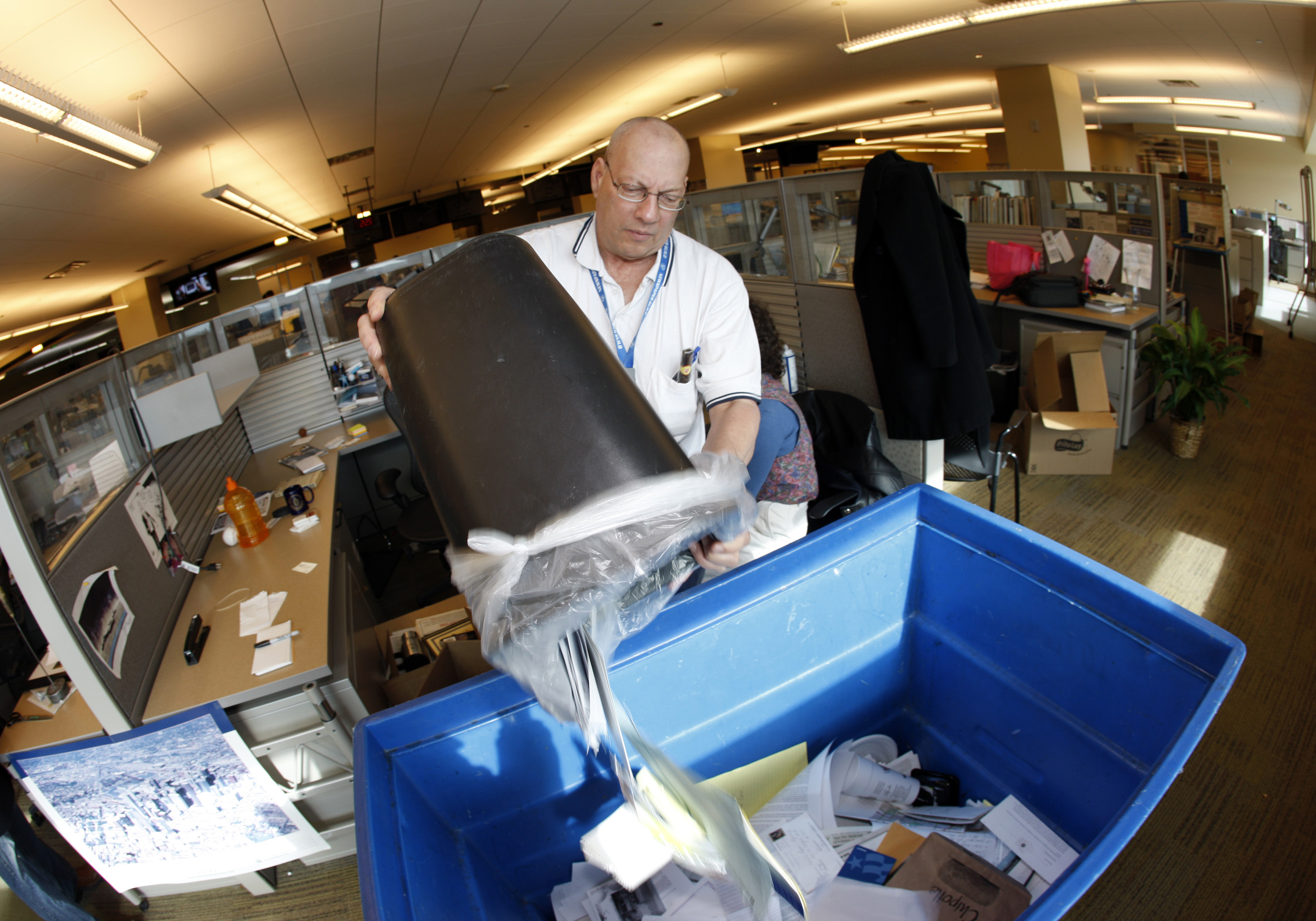
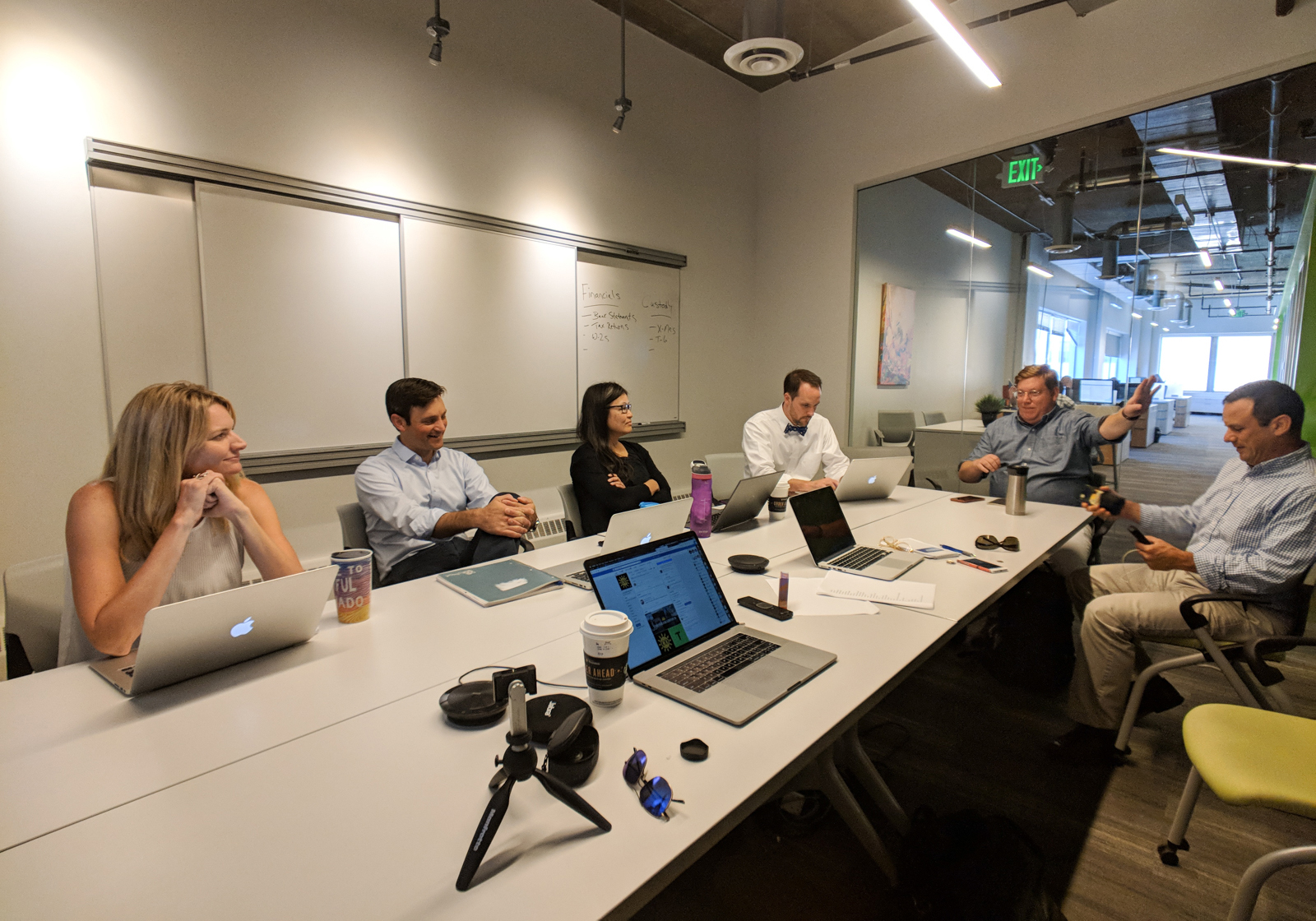
The changing dynamics of journalism as demonstrated in Denver: In 2009, the Rocky Mountain News closed after a fierce war with rival The Denver Post (left, columnist Gary Massaro clears out his desk after the final edition). Today, the digital-only startup Colorado Sun has emerged to compete with the Post (right, Colorado Sun reporters Jennifer Brown, John Ingold, Tamara Chuang and John Frank meet with Tom McGeveran and Josh Benson). (Photos by AP Photo/David Zalubowski and Eric Lubbers/The Colorado Sun)
In 2008, the financial crisis was already a disrupting force in journalism, Schudson said, and people were panicking. In 2009, he and Leonard Downie Jr. published a report called “The Reconstruction of American Journalism.”
The question then was what would replace the current business model?
“It’s 10 years later and no one’s found it, and that’s sobering,” Schudson said. “What we have are a variety of stabs in the dark, some of which are in fact working rather well.”
‘It’s both thrilling and daunting…’
We asked 15 journalists from around the country and at different points in their careers about the past decade. You can explore their answers by clicking on their photos below.
One question we asked them all through a Google form: What’s the biggest change you’ve seen journalism go through in the last decade?
“Social media,” said Ken Ward Jr., an investigative reporter at The Charleston (West Virginia) Gazette-Mail and one of this year’s MacArthur grant fellows.
And what are you doing now that you didn’t expect 10 years ago?
“Social media,” Ward said.
Ten years ago, Peter Baugh was in the sixth grade. Now, he’s a senior at the University of Missouri’s School of Journalism and will graduate this spring. His biggest fear right now?
“… there’s definitely a fear of not finding a job or not winding up in a place I’m happy,” Baugh said. “It’s both thrilling and daunting that I could be anywhere in the country.”
Anne Galloway, founder of Vermont’s thriving nonprofit VTDigger is the most excited about “figuring out how to make the business model work.”
And the thing she’s most afraid of?
“Failing to figure out how to make the business model work.”
What’s the past decade been like for you? Fill out our form here. We’ll collect some of your answers and share them.
Written by Kristen Hare
Designed by Ren LaForme
Edited by Barbara Allen
Alice Short, Rick Edmonds, Daniel Funke and Tom Jones also contributed editing to this piece
Correction: An earlier version of this story got the math wrong with the increase in newsroom diversity from 2008 to 2017. It’s a change of three percentage points. Also, we messed up part of the title of the Online News Association. We apologize for the errors. They have been corrected.





